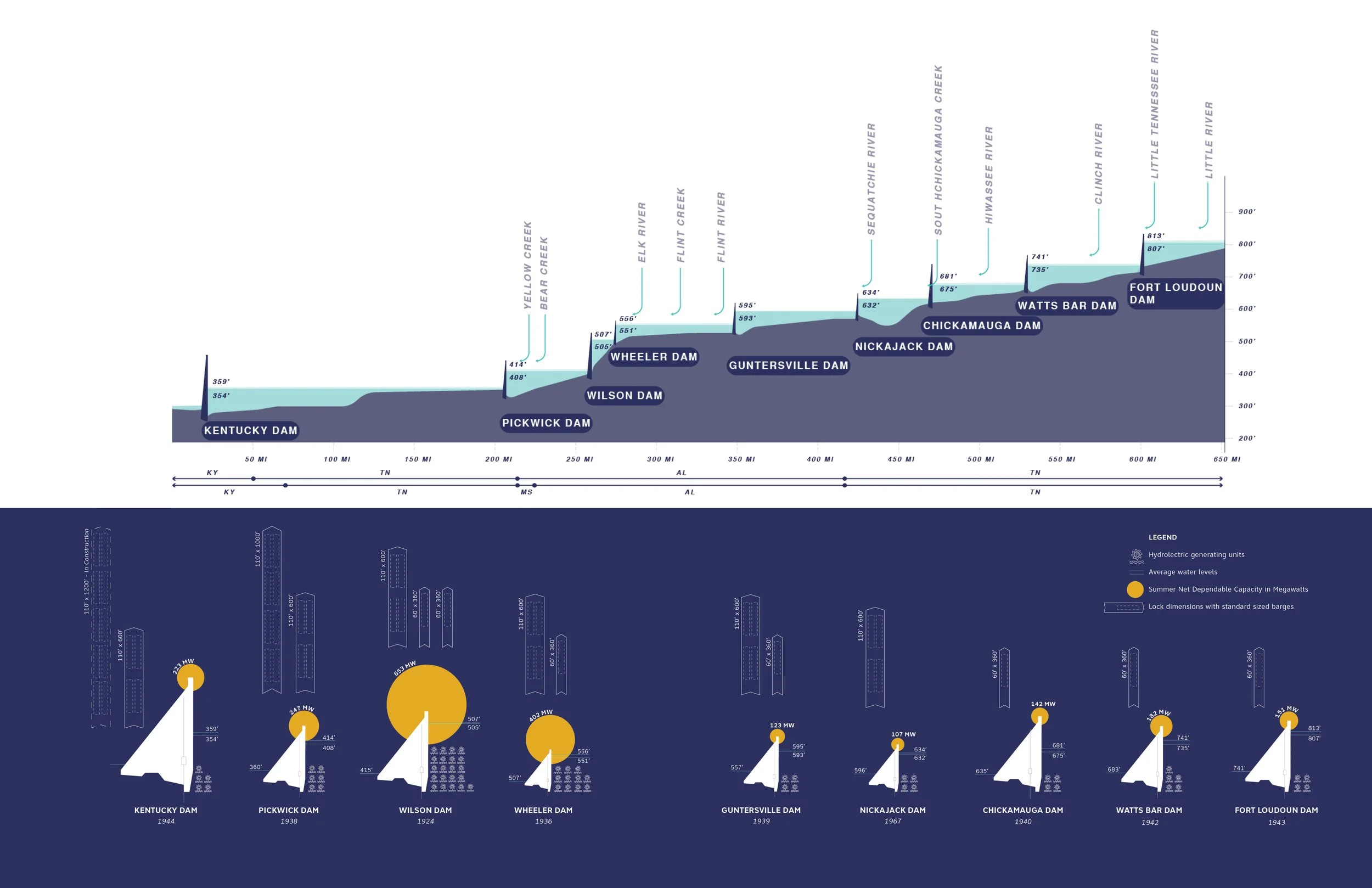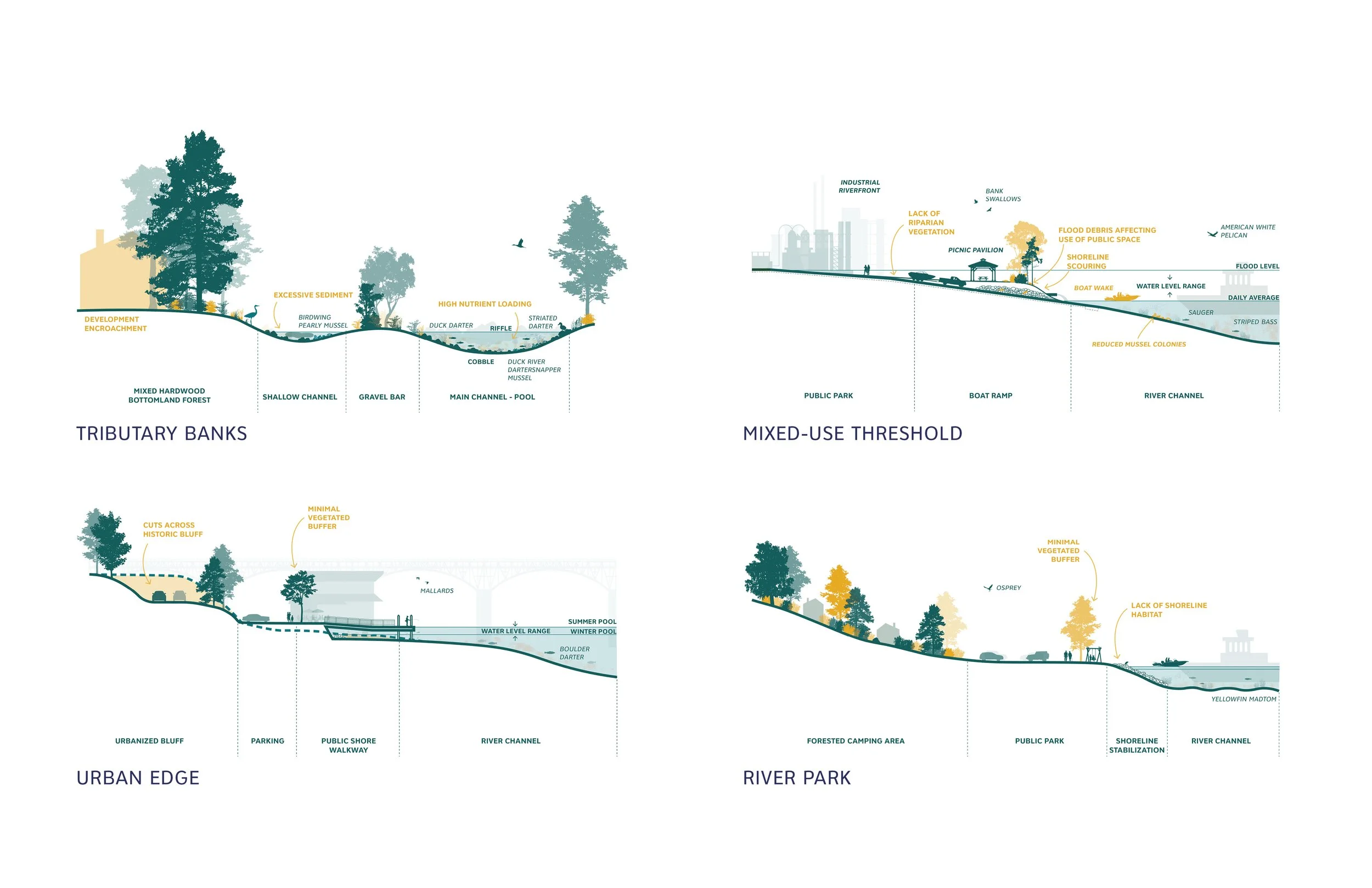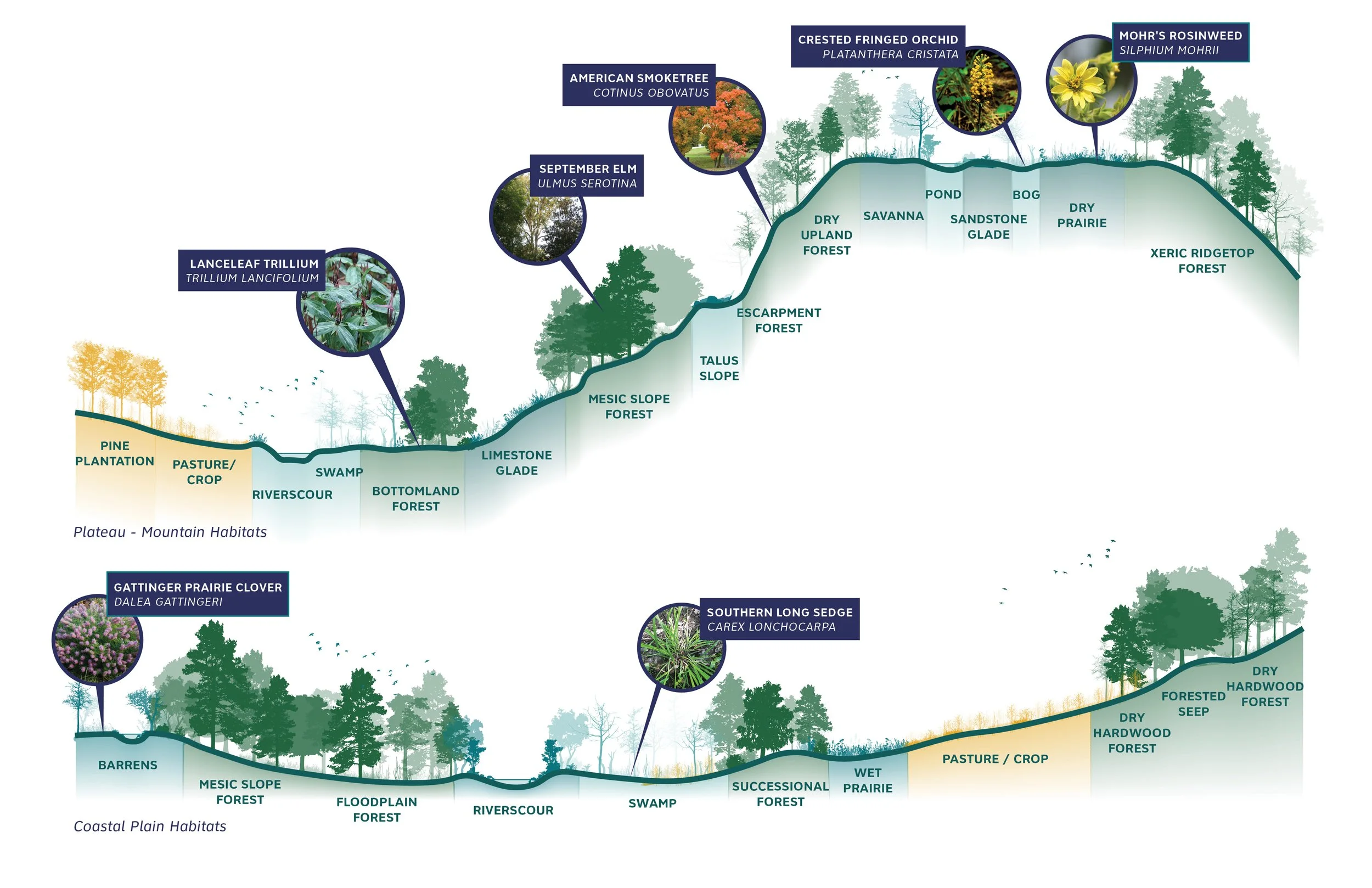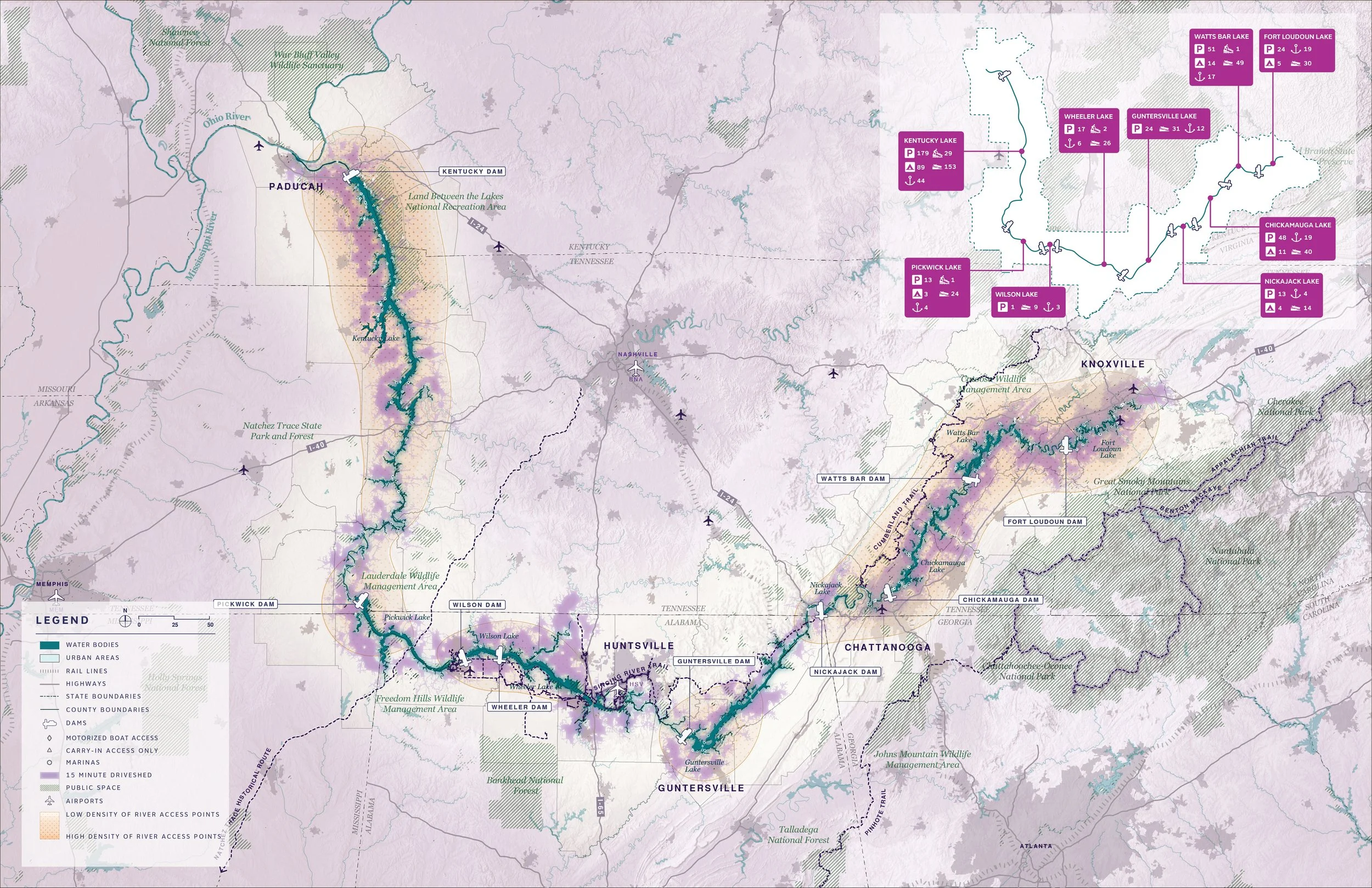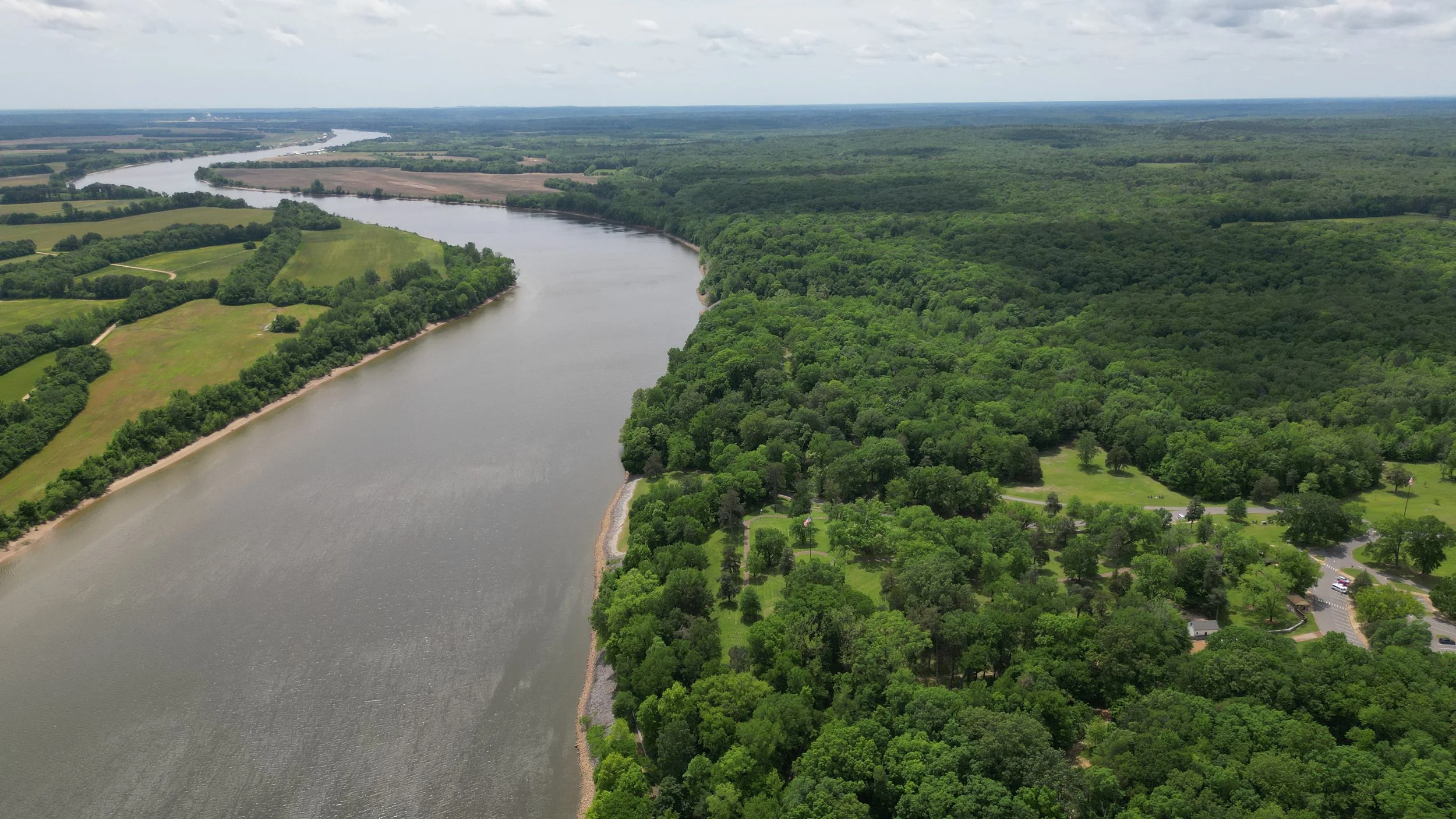
A Landscape
Shaped by its River
The Tennessee River stretches 652 miles through four states, shaping communities, ecosystems, and economies along its course.
As a first step in developing the Planning + Design Standards, the team compiled an Existing Conditions report that explores the river’s history, culture, ecology, management, recreation, demographics, and economic roles, revealing how its past and present are deeply intertwined.
River As A Way Of Life
For millennia, Indigenous peoples lived along the river, until forced removals like the Trail of Tears reshaped the region.
Later, the river played roles in the Civil War and 20th-century modernization through the Tennessee Valley Authority (TVA), whose dams redefined not only the river’s flow but also the social and economic development of entire communities.
From River To Reservoir
Management of the river today is shared by the Tennessee Valley Authority (TVA), state and federal agencies, and private landowners, finding a delicate balance between energy production, navigation, ecology, flood control, and recreation.
These overlapping jurisdictions pose both challenges and opportunities for coordinated planning, especially as environmental, energy, and recreation pressures evolve.
A Fragmented River Basin
The Tennessee River Basin is one of the world's most ecologically rich regions, hosting unique species across varied landscapes from mountains to wetlands.
However, the shift to dam-controlled reservoirs has altered ecosystems. Some species have adapted to these lacustrine environments, while others have declined due to habitat fragmentation, pollution, invasive species, and disrupted hydrology.
The River as Park
The Tennessee River is both a vital economic corridor and a recreational destination, but access is greatly varies along its reach.
While some stretches support well-developed recreational economies, others remain underutilized or inaccessible due to shoreline privatization, lack of infrastructure, or environmental degradation.
A Delicate Balance at Risk
Pollution, aging infrastructure, and legacy land-use decisions create uneven environmental risks across the basin.
Without coordinated resilience strategies, communities and ecosystems remain vulnerable, but basin-wide planning could unify restoration, infrastructure, and health goals.
Read the Full Document
Access the complete Tennessee RiverLine Existing Conditions Report on our Resources Portal. The full document provides an expanded background that complements this summary.








